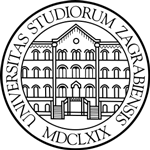Rendering process and methods for creating stylized and photorealistic computer-generated 3D characters for video games development with their comparison
Abstract
Computer Graphics combined with modern technology and complex rendering solutions with 3D visualisation enabled that digital art could become the most widespread form of visual art in the world. Man has been the main point of interest of art for millennia until today. There are two basic ways of depicting characters: stylized and realistic.
Over the years the process of creating digital signs is not linear, which means that in most cases it is necessary to jump between steps. The workflow will depend on two key factors, which are the style and the use of 3D characters. More complex designs require more attention to detail, which affects the process and length of the workflow. Digital 3D characters can be used in video games, movies, visual graphics, 3D printing. Characters used in games will have significantly fewer polygons than movie-ready characters, while 3D-printable characters will have their own set of rules that make them printable.
Complex graphics combined with strong computer power and high end performaces offer huge progress in digital art. Regardless of the different styles and use cases, there are certain workflow steps that stylized and realistic characters share, namely: design and references, retopology, UV unwrapping, texturing and materials, scene setup, lighting, rendering, and post-production processes. This paper compares the workflows between stylized and realistic characters and their advantages and disadvantages.

This work is licensed under a Creative Commons Attribution-NonCommercial-NoDerivatives 4.0 International License.






